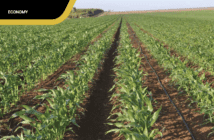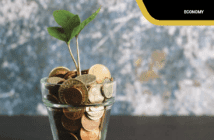By Derek Mutiso
What It Means For Kenya On July 9th 2022, the world woke up to shocking news. People from around the world watched in utter disbelief as Sri Lankans stormed the presidential palace in their country’s capital, Colombo. Braving tear gas and live ammunition from security forces, the crowd managed to force its way into the palace grounds, and eventually into the building which their president had once called home. Overwhelmed, the security forces were reduced to mere onlookers as scores of people climbed over the perimeter fence, and into the compound of President Mahinda Rajapaksa.
Photos and videos posted on social platforms showed them enjoying the luxuries of the president’s estate, documenting themselves dawdling on exquisite furniture, swimming in heated pools, and even weightlifting in the home gymnasium. Before the crisis, The Central Bank of Sri Lanka had raised eyebrows when it published statistics illustrating an inflation rate figure that was less than30%, contradicting researchers from John Hopkins University, who had ranked the country as having the third highest inflation rate in the world. The financial meltdown has disrupted the lives and livelihoods of millions of Sri Lankans, who despite facing dire shortages of essential goods, have had to bear long queues for petrol,cooking gas and kerosene.
Hour-long power cuts have become a daily occurrence across the Island. Prices for basic necessities like rice and fish have soared out of control. Vegetable prices have more than doubled. President Rajapaksa disallowed the distribution of artificial fertilizers in 2021, in an attempt to convert Sri Lanka’s agriculture sector to fully organic practices. The restrictions caused a considerable dip in agricultural yields. Since then, chemical fertilizers that were once distributed free of charge by the government have become a luxury good, too expensive for most farmers to afford.
Although the policy has now been dropped, the farming system has not yet recovered. The COVID-19 pandemic has already had a negative impact on Sri Lanka’s health sector. Currently, there are serious drug shortages, specifically for cancer, heart, and stroke patients. Only emergency operations are allowed in some hospitals, which have had to put routine operations on hold. Some cancer physicians have had to make requests for donations from abroad in order to get the drugs they need for therapy. Many patients are now required to purchase previously free medication at outrageous prices from private pharmacies. Significant obstacles to education also exist.
Due to recent fuel shortages, students and teachers have been unable to access public and private transportation, prompting schools to close. In-person lectures have been suspended by universities. Internet service provider constraints and daily power outages frequently cause interruptions to online lectures. One can only wonder how the country deteriorated to such a desperate level. While the Rajapaksa administration has contributed significantly to Sri Lanka’s plight, the crisis the country is facing is an extreme case of a more widespread, global economic slowdown which economic experts refer to as stagflation.
Countries like the USA are all too familiar with stagflation, having faced it in the 1970s, but in Sri Lanka, the
concept is fairly new. Stagflation is an economic situation characterized by slow economic growth, high unemployment, and rising prices (inflation). It can also be described as a period of rising prices coupled with a plunge in Gross Domestic Product (GDP). All signs show that the country is currently battling the effects of stagflation.
The World Bank cut its projection for global growth in June 2022 and issued a warning that many countries
could experience recession as the global economy shifts into a stagflationary phase akin to what occurred in the 1970s. In the bank’s most recent Global Economic Prospects report, the rate of global economic expansion is anticipated to fall to 2.9 percent this year, down from 5.7 percent in 2021.This is 1.2% less than the 4.1% estimate made in January this year. The report acknowledged some stagflation risks and predicted that growth would later hover around that level through 2023 to 2024, noting that inflation in most nations remains over target.
In the June Global Economic Prospects report, the World Bank noted that the Russian invasion of Ukraine has further amplified the negative impact of COVID-19 on the global economy, which has now entered a period of contraction that might eventually lead to a sustained period of sluggish growth and high inflation. This increases the likelihood of stagflation, which could have negative effects on both middle- and low-income economies including Kenya.
“The war in Ukraine, lockdowns in China, supply-chain disruptions, and the risk of stagflation are hammering growth. For many countries, recession will be hard to avoid,” said World Bank President David Malpass. “Markets look forward, so it is urgent to encourage production and avoid trade restrictions. Changes in fiscal, monetary, climate and debt policy are needed to counter capital misallocation and inequality.”
In the bank’s most recent Global Economic Prospects report, the rate of global economic expansion is anticipated to fall to 2.9 percent this year, down from 5.7 percent in 2021. This is 1.2% less than the 4.1% estimate made in January this year. The report acknowledged some stagflation risks and predicted that growth would later hover around that level through 2023 to 2024, noting that inflation in most nations remains over target.
By focusing on how stagflation can affect emerging markets and developing nations, the June Global Economic Prospects report provides the first detailed analysis of how current global economic conditions correlate with the famous stagflation of the 1970s. Steep interest rate hikes were necessary in the advanced economies affected in order to recover from the stagflation of the 1970s.These increases had a trickledown effect, and were a major factor in the series of financial crises that occurred in emerging markets and developing nations.
In a recent interview, Ayhan Kose, the director of the World Bank’s Prospects Group said, “Developing economies will have to balance the need to ensure fiscal sustainability with the need to mitigate the effects of today’s overlapping crises on their poorest citizens.” “Communicating monetary policy decisions clearly,
leveraging credible monetary policy frameworks, and protecting central bank independence can effectively anchor inflation expectations and reduce the amount of policy tightening required to achieve the desired effects on inflation and activity.”
There are obvious similarities between the stagflation period of the 1970s and now. These include supply-side disruptions, projections of slow growth, and emerging economies’ susceptibility to the trickle down effects of monetary policy tightening that will be required to control inflation. The U.S. dollar’s stability,and the relatively solid balance sheets of major financial institutions are some of the contrasts between nowand the 70s. These contrasts indicate that there is some wiggle room to avoid falling deep into stagflation.Given that economies all around Africa have endured a gradual downturn since the Covid-19 outbreak, one would wonder what all of this means for our continent and fledgling nation. One instance is South Africa, which displayed indications of economic improvement in the final quarter of 2021.
A quarterly labor force survey, however, revealed that unemployment is now on the rise. Across borders in Burundi, where coffee accounts for almost 40% of all exports, and supports 8 million people who are involved in the supply chain in different ways, the industry is in freefall, as more and more farmers are choosing to plant more profitable crops. Data from www.tradingeconomics.com, a site with information on 196 countries and historical data based on more than 20 million economic indicators predicts that unemployment in Kenya will be at 7% by the end of this quarter. It is projected that the unemployment rate in Kenya will trend at around 8% in 2023.
Kenya’s trade imbalance rose to a historic Kes1. 24 trillion in the 11 month period that ended in November 2021 as a result of rising import costs for petroleum and industrial goods. In 2021, imports increased by 29% or Kes 430 billion to reach Kes 1.91 trillion, outpacing exports, which increased by a more modest Kes 89 billion or 15% to reach Kes 672.6 billion,according to the Kenya National Bureau of Statistics. For the first time in Kenya’s history we have imported more goods from the African continent than we’ve exported to it.
The prices for staple foods included in the food basket used to calculate inflation, such as potatoes, cabbages, kale, flour, onions, tomatoes, sugar, and cooking oil increased by an average of 20% in January 2022 compared to 2021, according to the Kenya National Bureau of Statistics. Most nations on the continent and around the world have posted similar trends. Apart from rising food prices, Kenya has seen a rise in fuel costs as well.
According to data from Focus Economics Consensus Forecast panelists, inflation is expected to average
7.0% in 2022, which is up 0.2 percentage points from last month’s forecast, and 1.9 points from February’s 5.1%. Kenya’s trade imbalance rose to a historic Kes1. 24 trillion in the 11 month period that ended in November 2021 as a result of rising import costs for petroleum and industrial goods. In 2021, imports increased by 29% or Kes 430 billion to reach Kes 1.91trillion,outpacing exports, which increased by a more modest Kes 89 billion or 15% to reach Kes 672.6 billion, according to the Kenya National Bureau of Statistics.
For the first time in Kenya’s history, we have imported more goods from the African continent than we’ve exported to it. If what the experts say is true, and if the statistics are anything to go by, then this is a defining moment for us, both as a country and as a continent.
In Kenya, with the elections coming up in August this year, and with the dark cloud of stagflation looming over us, we have to hold our leaders accountable for our future and ensure that we elect individuals who will be able to understand the economic situation sweeping across the globe. They need to be able to reason and brainstorm innovative ways to mitigate the risks of economic disaster.
Mutiso is a Business Writer Email; [email protected]




